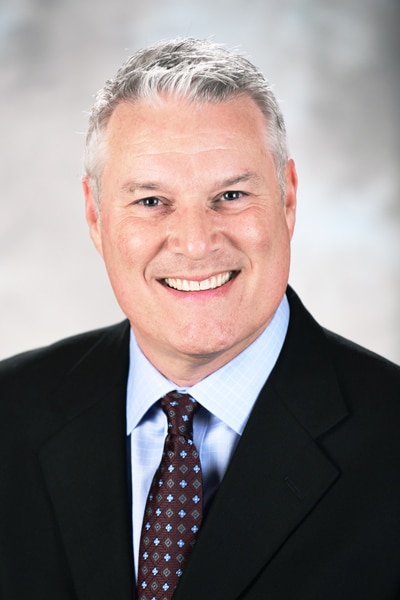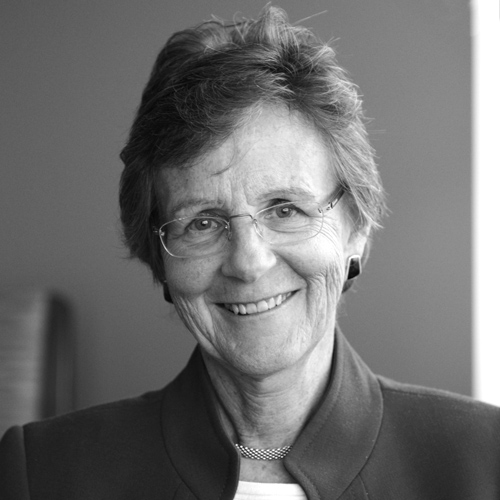Rather than a company or a hospital, it was the United States Air Force that sparked Rick Grooms’s passion for healthcare and human resources.
After attending The Citadel, a military college in South Carolina, Grooms worked as the squadron commander of a unit comprised of medical assistants, physicians, and nurses in Wichita Falls, Texas. He went on to build a foundation of human resources skills when he moved back to South Carolina to serve as an ROTC recruiter for Clemson University. It was an introspective time for Grooms as he was pondering many of the same questions he was asking recruits: What is your motivation? What do you enjoy? What are your long-term goals?
For Grooms, it became clear that building relationships and serving others was the answer.

“I learned very quickly in The Citadel—and even in the air force—that relationships drive results,” Grooms says. “You have to build rapport with people to meet them where they are. You need to recognize the gifts each person brings and that they may be different than yours or from other people’s gifts.”
Grooms continued to use those relationship skills in the military until the air force began downsizing in the early 1990s. Grooms decided it was time pursue his passion for healthcare and human resources in the private sector. His first position after he left the military was with a home health and hospice business. From there, he served as the director of human resources for two different hospitals in North Carolina: Roanoke-Chowan Hospital in Ahoskie and Randolph Hospital in Asheboro.
Those experiences set him on the path for his current job as chief human resources officer at AnMed Health, a health system located in Anderson, South Carolina, and northern Georgia that has more than four hundred physicians and nearly four thousand employees. AnMed is one of four hundred healthcare organizations out of six thousand nationally to be identified as part of the American Nurses Credentialing Center’s Magnet Recognition Program, which recognizes superior quality in nursing care.
The size of the organization means solid relationships and strong leadership are all the more critical. Grooms describes his leadership style as “tight, loose, tight,” which is an analogy of teaching someone to swim. At first, you keep the person tethered close, so you can make sure they are steady and safe, but after they demonstrate they can swim and survive in the water, you let the rope out as far as they want. This is where they stay, unless they run into trouble, in which case the rope is still there to tow them back in and evaluate what went wrong. Ideally, he says, that initial “tight” period is short, and then employees have all the leeway they need in the “loose” period indefinitely. If he needs to reel someone in, he evaluates “if they will recover, need another seat on the bus, or need to find another garden to bloom in.”
With Grooms’s leadership, his team at AnMed was able to wrap up a comprehensive wage and benefit study that led AnMed to overhaul its compensation plan altogether and add new pay grades and pay ranges. This victory for HR meant that about three out of five employees received a market adjustment. The team also helped institute the company’s switch to an electronic employee performance management system. For a company that is more than one hundred years old, the switch from paper and the new focus on goal-oriented systems for individuals and departments signaled a significant cultural change.
That change is one of the reasons Grooms enjoys working in the healthcare industry. “Healthcare is changing rapidly, sometimes to the degree that we don’t know the next change coming,” he says. “For some folks, that can be very intimidating. But I think with change comes opportunity. So, I look for ways that my team and I can plug into the organization and be a source of support, create something new, innovate, or tweak what we have.”
The patient is at the center of every decision for AnMed. The organization’s CEO, William T. Manson III, is famous for changing the saying, “What’s the matter with you?” Instead, he asks, “What matters to you?” Grooms explains that the key to success is all about listening and understanding patients’ needs and goals.
“We may not be able to cure every patient, but if we find out what is important to them, then we can work with them to get their needs met,” he explains. “We may not be able to cure your cancer, but if your goal is to get to a health state where you can be at home or spend time with your grandchildren or walk your daughter down the aisle—or whatever the case may be—we can work to get you there.”
He says that approach doesn’t stop with patients. For employees, it means asking what motivates them to perform at their best and recognizing each person as unique with different needs and desires. In healthcare, employees have many different options for where they want to work, so for Grooms, getting to the heart of what inspires people to stay and produce their best work is at the center of his mission.
“When you are serving, you may think you know what you need to do,” he says, “but you won’t know until you ask.”
Photo: Gary Meek/Phat Pixel Media
Pinnacle Consulting congratulates Rick Grooms on his recognition by AHL! Rick is steadfast in seeing that his executive colleagues remain focused on living out – and leading others in the pursuit of – the cohesive behaviors of trust, healthy conflict, commitment, accountability and focus on team results, and in the development of directional clarity for AnMed!

